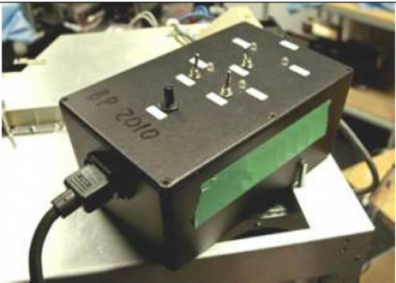If you would like to see more information on this case study, click here!
You can request this case study and a WCDE staff member will get back to you.
Christie Digital Systems Inc. (Christie) has established a global reputation as the world’s single source manufacturer of a variety of display technologies and virtual reality. Christie’s broad range of technologies includes Digital Light Processing (DLP) Cinema™ projectors, networking solutions, and cutting edge projection technologies for 3D, virtual reality and simulation [1]. All Christie projectors utilize ballasts; their primary function is to control the power levels sent to the projector lamps while maintaining a safe operating environment. Ballast control boxes (BCB’s), like the one shown in Figure 1, are used internally by Christie employees for testing the ballasts and lamps before assembly, allowing accurate information gathering by eliminating possible complications encountered from projector circuitry. The existing BCB design is over 10 years old and has served its purpose. This original BCB design has a limited ability to integrate air flow and temperature sensors and luminosity measuring devices. Additionally, the microprocessor used in the original design has reached the end of its service life. These problems, coupled with the diminishing supply of serviceable BCB’s, have led to the need for a redesigned BCB system. The project involves designing and testing of mechanical parts, the development of electronic circuitry, and software development.
Travis MacDonald, a co-op student from the University of Waterloo, was asked to investigate the electronic circuitry of the new BCB printed circuit board. The new design requires the consideration of space, cost, and technical limitations.

Christie’s current Ballast Control Box (BCB)
This case study develops, analyzes, and recommends a 5 volt power supply design solution. Three possible solutions are designed, evaluated, and then the most appropriate of these designs is recommended.
If you would like to see more information on this case study, click here!
You can request this case study and a WCDE staff member will get back to you.
Contact Waterloo Cases in Design Engineering
Steve Lambert
Tel: (519) 888-4728
Email: steve@uwaterloo.ca
The University of Waterloo acknowledges that much of our work takes place on the traditional territory of the Neutral, Anishinaabeg and Haudenosaunee peoples. Our main campus is situated on the Haldimand Tract, the land granted to the Six Nations that includes six miles on each side of the Grand River. Our active work toward reconciliation takes place across our campuses through research, learning, teaching, and community building, and is co-ordinated within the Office of Indigenous Relations.